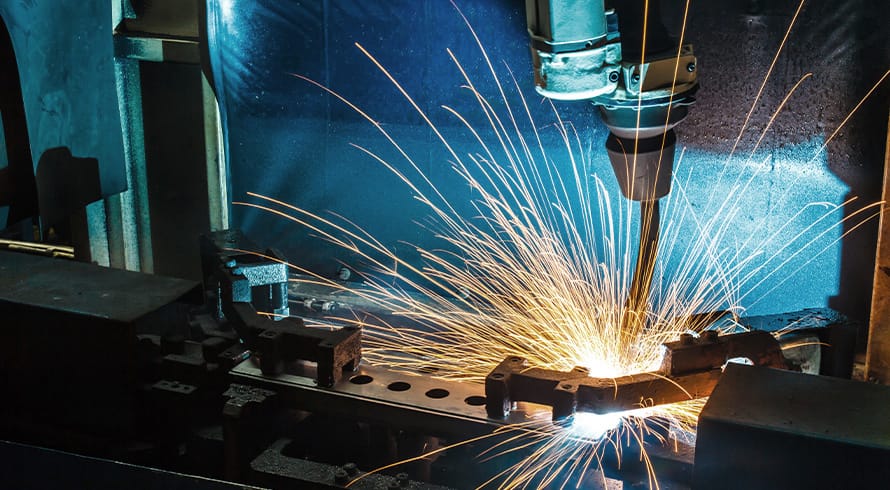Disruptive technology and its impact on the M&A landscape
Amazon is another example of a company that dramatically changed the game, creating an e-commerce platform which has up-ended the retail industry, introducing consumers to a new more-convenient way to shop. The use of e-commerce platforms enables retailers to offer significantly lower prices than traditional competitors as they don’t have to maintain the large overhead costs of renting massive retail space or employing a huge amount of sales staff. This has allowed start-ups with limited resources to successfully challenge larger well-established businesses by finding overlooked target markets in order to gain market share.
So how does disruptive technology impact the M&A landscape? A 2019 report by Deloitte, titled Disruptive M&A, Are you ready to define your future, states that with the current rate of change occurring in various industries, many companies are struggling to transform their business models fast enough to keep up with evolving industry standards. Many businesses do not have the necessary internal resources or capabilities to generate the levels of innovation required to keep up. It hardly helps that most companies are already struggling to meet or exceed growth expectations due to difficult economic and socio-economic factors.
Well established companies are now turning to disruptive technologies to address the various issues that they are facing, such as technology shifts, changes in consumer behaviour and cross-sector convergences. Fast, flexible and strategic, disruptive technology has the ability to rapidly transform the acquirer’s business to enable it to keep up with market standards and to redefine how its business will operate in the future. A company’s ability to successfully exploit disruptive technologies will become critical to its longevity and profitability.
Disruptive technology provides for collaborative structures such as joint ventures and venture capital opportunities. These collaborative structures assist companies to test the waters with less risk allowing them to better understand the disruptive technology before making a substantial investment. These collaborative structures also assist companies in unlocking rapid growth rates which are fuelled by innovation, in order to transform businesses to keep up to date with market trends.
The acquisition of disruptive technology is not only about the financial returns. Such technology also offers access to new capabilities, highly skilled teams and operating models which assist companies in closing the innovation gap and exploring untapped markets.
In the 2019 edition of the PWC CEO Survey, 40% of executives worldwide stated that their companies are planning a new collaborative structure or joint venture in the next year with the aim of driving revenue growth. This follows the global trend that joint ventures have been on the rise in recent years.
To stay ahead, companies need to consider which technological shifts are likely to impact their business, identify opportunities in those spaces to differentiate them from competitors and then determine which opportunities warrant investment, acquisition or collaboration. The acquisition of disruptive technology is thus inherently complex as it requires the assessment and evaluation of a broader range of possibilities and targets than a traditional M&A transaction. Disruptive technology targets are valued and analysed differently because disruptive technology does not have an extensive track record or history for companies to base their investment decision on.
To be at the forefront of innovation-led growth, companies need to consider shifts in technology and consumer behaviour. As set out in the Deloitte 2019 report quoted earlier, there are three M&A strategies for companies to consider in this regard:
- invest in new growth and technological opportunities through venture financing opportunities;
- cross-sector convergence through joint ventures to collaborate with different industries to design and develop new market offerings; or
- the acquisition of resources, talent and different technologies, to assist the company in unlocking new sources of growth and revenue.
With disruptive technology radically altering the landscape of various industries, it will be interesting to see how companies draw the balance between making manageable investments that further their understanding of and experimentation with disruptive technology and overextending their businesses.
The information and material published on this website is provided for general purposes only and does not constitute legal advice. We make every effort to ensure that the content is updated regularly and to offer the most current and accurate information. Please consult one of our lawyers on any specific legal problem or matter. We accept no responsibility for any loss or damage, whether direct or consequential, which may arise from reliance on the information contained in these pages. Please refer to our full terms and conditions. Copyright © 2025 Cliffe Dekker Hofmeyr. All rights reserved. For permission to reproduce an article or publication, please contact us cliffedekkerhofmeyr@cdhlegal.com.
Subscribe
We support our clients’ strategic and operational needs by offering innovative, integrated and high quality thought leadership. To stay up to date on the latest legal developments that may potentially impact your business, subscribe to our alerts, seminar and webinar invitations.
Subscribe



